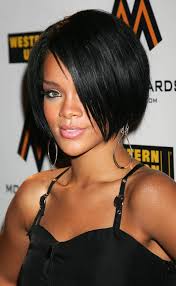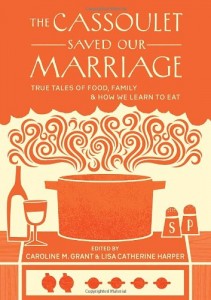 We had different plans for this month’s blog, but it has become impossible not to comment on what transpired on the night before the Grammy’s.
We had different plans for this month’s blog, but it has become impossible not to comment on what transpired on the night before the Grammy’s.
Tonni: Thanks to the wonder of technology I was receiving live Grammy commentary via a three-way conversation with friends in the States when my girlfriend mentioned that Chris Brown was missing. Apparently so was ‘our girl’ Rihanna- ‘our girl’ ‘cause she’s a fellow ‘Caribeana’ and regardless of her vocal abilities we’re proud and protective. There are many problems with what happened next but what I find repulsive is how the gory details are unfolding in the media. Unlike Salon’s Tracy Clark-Flory, try as I might I couldn’t escape TMZ’s trademarked photo. It was everywhere, displaying a young woman battered, bruised, and completely and totally vulnerable.
Gwen: As a survivor of violence myself, it will not come as a shock that, like Tonni, I was saddened, outraged and generally overwhelmed by the coverage of Rihanna’s struggle with domestic violence. We felt that highlighting Rihanna’s ordeal could help us capture the fact that domestic violence is directly related to the systematic oppression of women around the world, regardless of race, class, ethnicity and fame. In short, domestic violence can happen to anyone, including celebrities. Further, the coverage of domestic violence in popular media outlets shows the shortcomings of current methods in dealing with the structural nature of violence against women.
The Big Picture
According to Amnesty International’s Stop Violence Against Women program, without exception, a woman’s greatest risk of violence is from someone she knows. Amnesty International classifies domestic violence as a human rights abuse, rightly arguing that the Universal Declaration of Human Rights affirms the inadmissibility of discrimination and proclaims that everyone is entitled to all the rights and freedoms set forth in the declaration, without distinction of any kind, including distinction based on sex. When women are subjected to domestic violence and the State does not protect them against this violence, whether due to inefficient or ineffective laws and policies, then the State should be held responsible for the abuse.
In 2005, the World Health Organization (WHO) released the groundbreaking World Health Organization Multi-country Study on Women’s Health and Domestic Violence Against Women, presenting data collected from over 24,000 women from 15 sites in 10 countries in various regions of the world. Shockingly – or not, depending on your point-of-view – in most places, between 11 and 21 percent of women reported being hit by a partner with his fist. In most countries, the percentage of women who have experienced severe physical violence in their lifetime fell between 13% and 26%, with research concluding that if women had ever experienced partner violence, the chances were high that, at some point, an act of severe violence would occur. Sadly, in all countries, the researcher was frequently the first person that the abused woman had ever told about their partner’s physical violence (not surprising considering that Domestic Violence is one of the most-underreported crimes).
In the United States, Amnesty International reports that a woman is battered every 15 minutes. According to the recently-released National Network to End Domestic Violence report, Domestic Violence Counts 2008: A 24-hour census of domestic violence shelter and services across the United States, over 60,799 survivors were being served by emergency shelters or temporary housing programs in the United States and territories in one day. And this survey only covered 78% of identified domestic violence programs and, of course, does not track the countless number of women who either do not report violence, or who have not sought refuge in one of these programs.
Domestic Violence in the Media
“The speed of communications is wondrous to behold. It is also true that speed can multiply the distribution of information that we know to be untrue.â€
Edward R. Murrow
Unfortunately we weren’t able to find binding laws to protect domestic victims’ privacy from the media. (If your State/Country has one please let us know). In the USA, there is a tug of war between the freedom of speech and the press and the right to privacy. Interestingly, the right to privacy isn’t written into the US constitution (as is often assumed), but freedom of the press and speech are clearly outlined. This is one of the first times that a case like this is being tried not in the “mainstream press,†but primarily in the blogs. Blogs have become such a force that a “reputable†paper such as the LA Times felt it necessary to shirk journalistic convention (we prefer the word integrity) and reveal a domestic violence victim’s name, because she was famous and thus ‘fair game’. As perverse as it sounds, it was clear that if they didn’t reveal the name, it would be only a matter of time before someone else would. The official source of celebrity sludge, TMZ, then trumped the LA Times by releasing the picture of a battered Rihanna. Then in a horrifying development, legitimate media sources (including countless television news broadcasts, the so-called progressive blog Huffington Post, not to mention the less-than-reputable New York Post) jumped on the bandwagon and plastered the picture in news casts, on websites and even (in the case of the Post) on the front page of their newspapers. (Feministing blogger Jessica Valenti best sums up our feelings on the subject in this clip.) Even staff at Bossip (the black-gossip blog that gives some of us folks of color scoop on the celebrities that don’t normally make the TMZ cut) who seem to be staunch supporters of Rihanna, posted a story that alleged that ‘Breezy’, as they like to call Chris Brown, beat Rihanna because she gave him an STI.
Nancy Berns identifies three main frames of domestic violence in the media in her book Framing the Victim: Domestic Violence, Media and the Social Problem. The frames are 1) victim empowerment, 2) women are equally or more violent, 3) and social justice. Her argument is that the voices that construct the reality of domestic violence for the public blame the victim and individualize the problem. She gave him an STI! She started the fight! He’s a good kid who wouldn’t do anything like that unless provoked! She should have fought back! Caribbean women fight back! More than ten years ago the Inter-American Development Bank held a conference on domestic violence and participants concluded that, through careful reporting, the media could raise public awareness about such violence and help build consensus. This has not been the case with the ‘Chrihanna’ situation, as some outlets have characterized it.
We get that she is a public figure and that appears to imply everything in her life is fair game. We get that she may now become the poster child for domestic violence and that her trauma has brought domestic violence center-stage of the public psyche. (Hey, despite the revelations about racism in the LAPD that were revealed through the Rodney King ordeal, King himself may not have appreciated watching the video of his brutalization over and over again.) Nevertheless, we think that there needs to be a better way. There must be some kind of journalistic standard to which all media sources comply. Which sane starlet would go to the police now if brutalized? How many young women will remain silent about a crime that is already grossly underreported? We can and must rein in some of the wonders of technology.
What we all can do
If you’re upset about the media coverage of Rihanna’s case (or other VAW cases), why not write your local newspaper/television station/radio station telling them that violence against women is NOT an entertainment story. Tell them it is NOT okay to post photos of domestic violence survivors without their permission. We should recognize that violence against women is a structural problem, and one that should be reported accurately and not sensationally. You can even use some of the numbers in this article.
We recognize that there are times when the world of research gets too esoteric. In providing you with the facts here, we hope that they pulsate with you, with survivors of domestic violence, with their friends and loved ones, and anyone who has questioned what on earth is next after emotional and/or physical abuse. The tabloid blogs and the news media have sensationalized this story to the point that we forget that there are two human beings behind it. For us, this is a story of a twenty-one year old young woman—someone’s daughter, sister, niece, friend—who was brutalized by someone she loved and trusted. Do let the woman dictate the role she wants to play in the fight against domestic violence.


 A few years ago (ok may more than a few) Gil Scott Heron said the revolution would not be televised and Tracey Chapman, when talking about the revolution, thought it would whisper, not ‘tweet’. Iranian women and men are risking their lives to protest for their rights and their voices will be heard, televised, and ‘tweeted’.
A few years ago (ok may more than a few) Gil Scott Heron said the revolution would not be televised and Tracey Chapman, when talking about the revolution, thought it would whisper, not ‘tweet’. Iranian women and men are risking their lives to protest for their rights and their voices will be heard, televised, and ‘tweeted’.  We wrote a posted called
We wrote a posted called  Travels and graduations behind us, we’re back! This month foremost on our minds is the issue of budget cuts. How many times will history have to repeat itself before we get it right?
Travels and graduations behind us, we’re back! This month foremost on our minds is the issue of budget cuts. How many times will history have to repeat itself before we get it right? Busy month for the Global Exchangers!
Busy month for the Global Exchangers!  Taking off our inaugural ball gowns (woo-hoo Obama!) and picking up our pens, this week’s Global Exchange will take a look at religious faith and feminism.
Taking off our inaugural ball gowns (woo-hoo Obama!) and picking up our pens, this week’s Global Exchange will take a look at religious faith and feminism. We’ve been marinating on 2008; what an incredible year! Turbulent, exciting and really most of our wishes seemed to be granted in one fell swoop with the outcome of the US election.
We’ve been marinating on 2008; what an incredible year! Turbulent, exciting and really most of our wishes seemed to be granted in one fell swoop with the outcome of the US election. We’re back to regale with tales of research from the international hinterland. The global economic crisis has been making front-page news for weeks now. And while we’ve heard lots about the bankers and the automakers, the
We’re back to regale with tales of research from the international hinterland. The global economic crisis has been making front-page news for weeks now. And while we’ve heard lots about the bankers and the automakers, the 